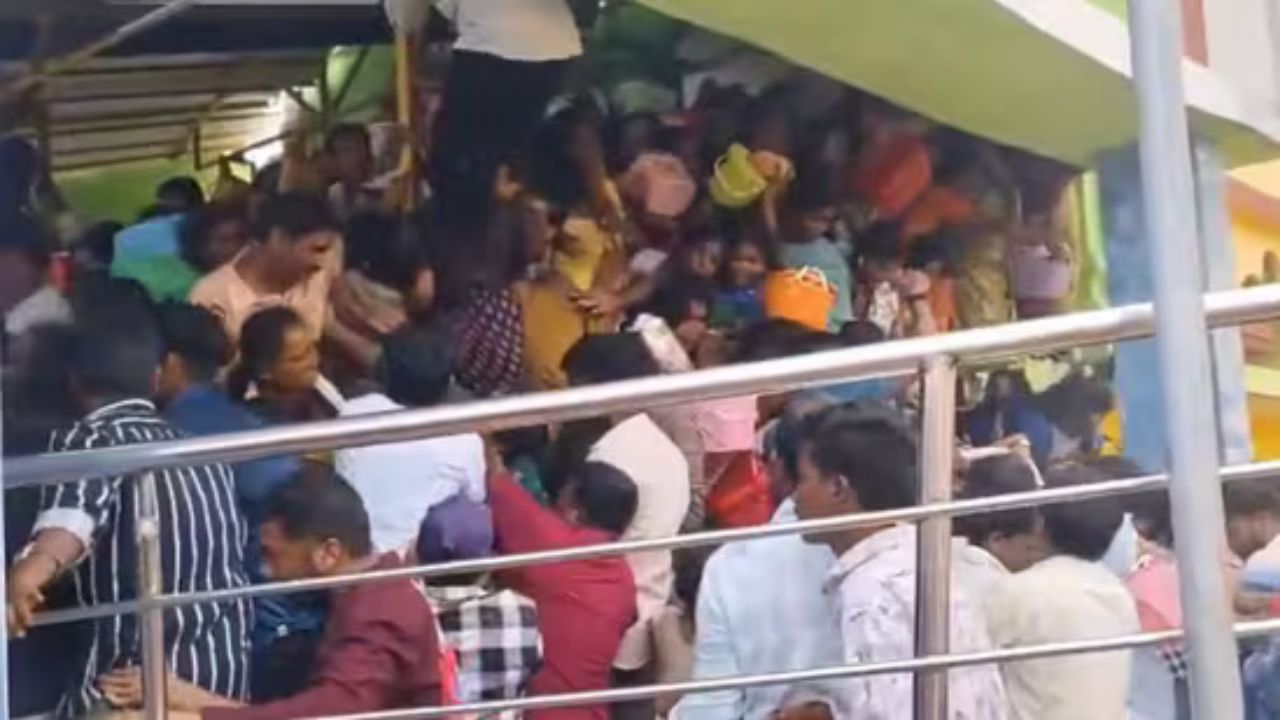 English
English

A day of devotion turned tragic at Andhra’s Sri Venkateswara Swamy Temple as a stampede killed nine, including two children. With no permits, one exit, and poor planning, how did a spiritual gathering spiral into chaos?

The tragic incident has exposed glaring lapses in crowd control.
Kashibugga: A day meant for devotion at the Sri Venkateswara Swamy Temple in Kashibugga, Srikakulam district, Andhra Pradesh, ended in horror after a stampede claimed nine lives, including two children.
The tragic incident has exposed glaring lapses in crowd control, safety planning, and regulation at the privately run temple, now under investigation by state authorities.
Officials revealed that the temple, popularly known as “Chinna Tirupati” or “Little Tirupati”, was not registered under the state’s Endowments Department, meaning it lacked official oversight or mandatory safety audits.
‘Extremely heartbreaking’: CM Naidu mourns deaths in Andhra temple stampede; Full story here
Since the temple operated independently, the organisers conducted the Ekadashi celebrations without obtaining necessary permissions or safety clearances from the government. The district administration reportedly had no prior information about the scale of the planned gathering, which drew tens of thousands of devotees from across the region.
“This was a private event held without any coordination with local authorities,” a senior district official confirmed. “No one had anticipated such an overwhelming turnout.”
In a shocking revelation, the area where devotees were allowed to assemble was still under construction. Despite visible structural work and incomplete facilities, entry to the premises continued unchecked.
According to initial reports, organisers did not obtain safety approvals, and no crowd management plan was in place. As a result, narrow, unfinished passages and uneven flooring created dangerous choke points that worsened the crush once panic broke out.
శ్రీకాకుళం జిల్లాలోని కాశీబుగ్గ వెంకటేశ్వర ఆలయంలో తొక్కిసలాట ఘటన కలచివేసింది. ఈ దురదృష్టకర ఘటనలో భక్తులు మరణించడం అత్యంత విషాదకరం. మృతుల కుటుంబాలకు ప్రగాఢ సానుభూతిని తెలియజేస్తున్నాను. గాయాల పాలైన వారికి మేలైన సత్వర చికిత్స అందించాలని అధికారులను ఆదేశించాను. ఘటనా స్థలానికి వెళ్లి…
— N Chandrababu Naidu (@ncbn) November 1, 2025
Saturdays usually see between 10,000 to 15,000 visitors at the temple. However, this Ekadashi weekend drew a massive 25,000-strong crowd, overwhelming the limited infrastructure.
Witnesses recounted that the stampede began in the women’s queue, where devotees were jostling for space. The temporary barricades, meant to guide movement, collapsed under pressure, causing people to trip and fall.
“As people began to fall, others panicked and tried to move back, but there was no space,” said a local eyewitness. “Everyone was pushing, shouting, and within seconds, it turned into chaos.”
One of the most critical lapses was the absence of separate entry and exit routes. The entire crowd used the same narrow pathway to enter and leave the temple premises.
As devotees tried to escape, the congestion intensified. Those attempting to help the fallen were themselves caught in the surge. Rescue efforts were delayed as emergency personnel struggled to reach victims through the jammed corridor.
Andhra Pradesh Minister Nara Lokesh, who oversees RTGS operations, is coordinating relief efforts and is expected to visit the site. Chief Minister N Chandrababu Naidu has directed officials to provide immediate medical care to the injured and ordered a detailed inquiry into the incident.
Andhra Pradesh Stampede: Tragic Stampede in Srikakulam, Andhra Pradesh Claims 9 Lives
In an official statement, the Chief Minister expressed deep sorrow over the tragedy and assured that those responsible for the safety lapses will be held accountable.
The incident has reignited debate over the regulation of privately managed temples and religious events. Experts and citizens alike are demanding tighter safety protocols, mandatory registration, and better coordination between temple committees and local administrations.
As investigations continue, grieving families and shocked devotees are left questioning how a sacred space of faith and devotion turned into a site of tragedy and whether it could have been prevented